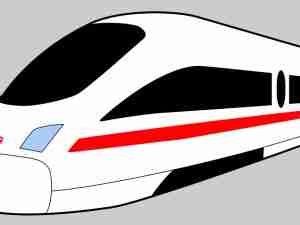Containers full of exports regularly rumble out of a CSX railroad facility a half mile from the $3.2-billion Honda auto plant at Marysville, Ohio. They first roll to Columbus and then to inland transport hubs such as Chicago and Kansas City. Then the boxes make the long trip to the West Coast. Many containers from Marysville go through Seattle. The contents end up in Japan on dining tables. Obviously, we're not talking about transmissions or rearview mirrors here. Instead, some of the containers that Honda exports from Marysville are full of soybeans. The number of these containers is relatively small, but with millions of containers going back to Asia empty due to America's huge trade deficit, the Japanese-bound soybeans are stars of one of the few positive stories about US sales to the Far East. "Our function is, in a small way, to help balance trade, partly by increasing US exports to Japan," Hitochi Morimoto, assistant vice president of Honda Trading America, told the AJOT.
HTA was created in the 1980s specifically to backfill containers of auto parts and equipment coming into the US from Japan. US-Japan trade tensions in that day resembled those of today over China's lopsided export advantage. Morimoto helped start Honda's soybean export business in 1986 after he had a chance meeting in an airport with a Japanese soybean supplier, according to press reports. Today, HTA buys some one million bushels of soybeans from farmers in Ohio and Michigan, where crops are particularly rich in protein. Some beans are even grown on the infield of the Honda Marysville's auto test track.
"Sales people from Japan visit the growers' lots," Joe Hanusik, manager of the Honda soybean processing plant told the AJOT. "The beans are based on standards set by the customers. Each shipment can be traced back to the grower." This kind of accountability, called "identity preservation," is highly prized by discerning buyers. Honda at first processed the soybeans at outside plants. Now a processing plant near the auto factory removes pods, stems and weed seeds, cleans and polishes the soybeans and separates them by size and, to a lesser extent, by shape. A million-dollar dust-collection system protects a nearby Honda paint plant from soybean dust. The finished product is packed in 66-pound bags and loaded onto pallets by a robotic arm. Once containers full of the Midwest soybeans arrive in Japan, Honda Trading Japan handles distribution. HTA exports from 700 to 900 containers of soybeans a year, and shipments are increasing. "We're looking to other countries to increase output," Hanusik said. "Even shipments to Japan are going up every year and we're looking at other areas for opportunities. There's a market for identity-preserved, non GMO (genetically modified) soybeans."
Morimoto oversees exports of soybeans and other commodities. Shipments of hay are decreasing, but HTA still exports about 60 40-foot containers of the product each month. The company also has monthly overseas shipments of 100 to 120 containers of aluminum scrap and ingots and 20 to 25 containers of wastepaper products. "We're constantly in search of new exports," Morimoto said. "Now we're looking at PET bottles and containers for reprocessing in Asia. We have a few interesting items in the pipeline that could be ready in a year or two."
HTA also exports auto parts made by Honda in the US. Overall, the company exports more than 5,000 teus a year in ocean containers to at least 12 different countries, according to Fred Franco, assistant manager of the HTA Logistics/KD (knockdown) Management Department. The main markets are Japan, Brazil, China and Europe. Brazil is a big destination for US parts because Honda has an auto plant and a motorcycle factory in the country. Exports don't include parts shipped directly by the American Honda Auto Parts Division. "We represent HTA, not Honda in general," Franco said. The 5,000-plus teus exported by HTA roughly equals the number of teus it imports into the US by sea, he said said. (A smalle






